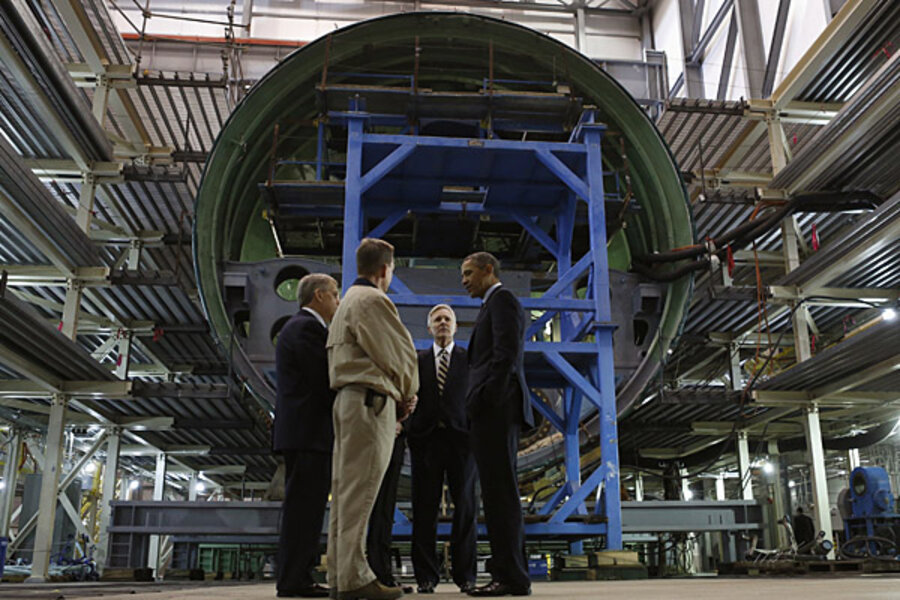Spending cuts: What does the sequester mean for energy?
Loading...
Spending cuts scheduled to start Friday will have a variety of effects, provided Congress fails to negotiate out of the approaching sequester. America's energy sector won't be spared, as federal agencies plan to furlough workers and curtail research spending.
In short, the spending cuts would delay leasing activity on public lands for everything from oil and gas to wind and solar projects, with a significant loss of revenue in the process. It would also cut funding for training for solar jobs, home weatherization, and energy research.
Here's a rundown of the effects:
Oil, gas and coal
Program cuts at the Department of Interior would mean a slowdown in the development of oil and gas resources on public lands, according to a White House report released Sunday.
Interior Secretary Ken Salazar made a similar argument in a letter to the US Senate Committee on Appropriations earlier this month, saying the sequester would mean approximately 300 fewer onshore oil and gas leases issued in Western states. Some of the 550 offshore oil and gas exploration plans in the Gulf of Mexico would also be jeopardized.
These delays or cancellations would have a considerable financial impact, the Department of the Interior says. State and local governments could stand to lose some $200 million in revenue generated from mineral leasing on federal lands.
Delays in coal leasing would defer as much as $50 million to $60 million per sale, according to the department.
Renewables
The permitting of solar and wind installations on federal lands may also decelerate.
“We have made impressive gains, approving dozens of utility-scale solar, wind and geothermal projects in the West and transitioning from planning to commercial leasing for offshore wind,” Mr. Salazar said in a keynote address Tuesday at the Offshore Wind Power USA Conference in Boston. “The potentially devastating impact of budget reductions under sequestration could slow our economy and hurt energy sector workers and businesses.”
In a letter to the Senate Committee on Appropriations, Energy Secretary Chu expressed concern "for the Department of Energy's ability in the face of such cuts to make the investments needed to grow our economy through basic scientific research and advances in clean energy technology, secure our Nation through the stewardship of our nuclear stockpile, and meet our obligations to clean up the environmental legacy of the Cold War."
Sequestration would slow the transition to a clean-energy economy, according to the Department of Energy, and weaken efforts to obtain energy independence. Spending cuts would slow down the Energy Department's efforts to make solar cost-competitive with conventional forms of electricity, the department says. A solar industry job training program targeted at military veterans is also slated to see reduced funding, if the sequester goes through.
Energy efficiency
Spending cuts could reduce by more than a thousand the number of homes weatherized through DOE funding and could leave 1,200 weatherization professionals out of the job.
A cut to the department's Vehicle Technologies Program would delay research and development investments or shut down a Manufacturing Demonstration Facility for 6-8 months. That translates to a slowdown in the nation's production of cleaner and more efficient vehicles, the DOE says.
Energy Star, the joint EPA-DOE energy efficiency program for household products, would feel the effect of sequestration. The updating of product specifications in more than 65 categories would slow down, the EPA says, and the department would reduce the number of energy-intensive sectors it works with to enhance energy efficiency measures.
Of course, allowing the sequester to happen may help some energy companies avoid increased taxes that could come as a result of a congressional deal.








